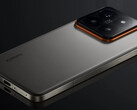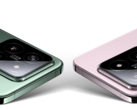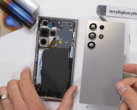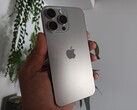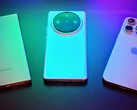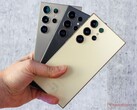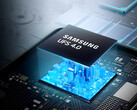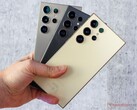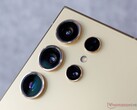Smartphone gaming has been taken to the next level with the release of the iPhone 15 Pro. It is the first time we’ve seen new, or near new AAA gaming titles make their way to smartphones. Titles now available on the iPhone 15 Pro (along with M1 and M2-powered iPads) includes Resident Evil Village, the Resident Evil 4 remake, Death Stranding and Assassin’s Creed Mirage.
As we noted in our recent benchmarking comparison of the iPhone 15 Pro Max, Galaxy S24 Ultra and Vivo X100 Pro, Apple looks to have solved the overheating issues widely reported not long after its launch. This was the result of a combination of a bug on the operating system and issues with third-party apps, and was resolvable through subsequent software patches.
Despite this, attention focused on Apple's use of a titanium frame in the design of the iPhone 15 Pro series, which differs from the more thermally conductive steel frame it had used in the preceding iPhone 14 Pro series. While the iPhone 15 Pro may no longer be prone to overheating in general use, it can certainly run warmer under light loads and even when idling compared to previous models. As we revealed exclusively, Apple has advised its technicians that this is “expected behavior” and is therefore not considered to be a hardware fault, but seems to come with the territory given its use of titanium and a relatively rudimentary cooling system.
With its overheating issues under control, a new emphasis on AAA gaming, coupled with an apparent acknowledgement that the iPhone 15 Pro models do run warmer than previous models even while at idle, we thought it would be interesting to run another test of our iPhone 15 Pro Max, pitting it against the Galaxy S24 Ultra and the Asus ROG Phone 8 Pro.
A real-world gaming test:
In this test, we weren’t focused on frames per second, or power consumption, but purely on the temperature of the respective phones before and after 30 minutes of AAA mobile gaming. It is simply a real-world test of device thermals after a typical mobile gaming session, although you can see how the iPhone 15 Pro Max and Galaxy S24 Ultra fared in our most recent Geekbench 6 and 3D Mark Wild Life Extreme Stress Test benchmarking article.
To keep things as fair as possible, we picked Alien: Isolation for the test. It is a AAA title ported from PCs and consoles that is available on both iOS and Android platforms. While it might not be one of the most recent AAA games on the market, it is still graphically demanding and was able to push all of the phones. The iPhone 15 Pro Max is powered by the A17 Pro, and is the first chip from Apple with a GPU that supports real-time ray tracing. Both the Galaxy S24 Ultra and the ROG Phone 8 Pro are powered by the Qualcomm Snapdragon 8 Gen 3 with an Adreno 750 GPU with support for a more advanced form of ray-tracing known as global illumination.
Thermal test results:
At the beginning of the session, the ambient temperature in the room was 26 degrees Celsius (78.8 F). The three phones had their temperature taken with an infrared temperature monitor on the back of each respective device, before and after each 30 minute gaming session. As you can see from the table below, the iPhone 15 Pro Max was idling at 30.3 degrees Celsius (86.54 F), the Galaxy S24 Ultra at 29.4 degrees Celsius (84.92 F), and the ROG Phone 8 Pro at 29.5 degrees Celsius (85.1 F). Batteries on all phones were charged at over 80%.
After 30 minutes of playing Alien: Isolation, the iPhone 15 Pro Max reached a temperature of 44.6 degrees Celsius (112.28 F), while the Galaxy S24 Ultra came in at 35.1 degrees Celsius (95.18 F) and the ROG Phone 8 Pro recorded a temperature on the rear of 34.3 degrees Celsius (93.74 F). The key point of differentiation between the devices and their performance thermally can be quickly pinpointed to the fact that both the Galaxy S24 Ultra and ROG Phone 8 Pro are both equipped with vapor chamber cooling systems.
Cooling systems and analysis:
The Galaxy S24 Ultra clearly benefits from a new, 92% larger vapor chamber than fitted to the Galaxy S23 Ultra. Its vapor chamber straddles across both the chip and part of the battery, with it also uses a thermal compound on the chip to transfer heat away from it to a thermal pad. Behind its vapor chamber sits a layer of graphite film that sits against a copper sheet residing behind the display.
In addition to the approach adopted by Samsung, the ROG Phone 8 Pro uses boron nitride, an advanced thermal compound to help transfer heat away from the chip to what it calls a “rapid-cooling conductor” between the SoC and the metal near the back cover. It also uses a couple of graphite sheet layers either side of its vapor chamber. JerryRigEverything called last year’s ROG Phone 7 cooling solution the most complex on the market and Asus claims its revised system is a further 20% more effective this time around.
While the benefits of the ROG’s cooling system aren’t immediately apparent here over the Galaxy S24 Ultra, we ran a separate benchmark of the 3D Mark Wild Life Extreme Stress Test to see how it performed under sustained load. While playing a AAA game for 30 minutes will certainly put a smartphone’s thermal system to the test, the 3D Mark stress test maxes it out for 20 minutes straight. The benefit of ROG's more sophisticated cooling approach over the Galaxy 24 Ultra becomes evident. It returned a best loop score of 5,222 and an incredibly impressive lowest loop score of 4,141. The same chip in the Galaxy S24 Ultra returned a best loop score of 4,918, but a lowest loop score of just 2,360.
However, for a non-gaming first phone, the Galaxy S24 Ultra strikes a happy middle ground between the ROG Phone 8 Pro and the iPhone 15 Pro Max. That said, the iPhone 15 Pro Max easily fared the worst in this comparison, running around 10 degrees Celsius warmer than the other two smartphones after 30 minutes of AAA gaming. Without a vapor chamber, and with limited use of graphite – including nothing at all on the rear of the motherboard to keep temperatures in check - it is little surprise it ran as hot as it did during this test.
Although this was not noticeable while using the Razer Kishi v2 controller, nor did it result in any obvious frame rate drops in Alien: Isolation, it would be very uncomfortable if you were holding an iPhone 15 Pro Max in your hands and using the touchscreen to play the game. Even though it is undoubtedly great to see new and recent AAA games on the iPhone 15 Pro Max, Apple’s current cooling approach doesn’t really cut it, which is a shame, as the A17 Pro is a very powerful chip that has the potential to deliver on Apple’s promise of having a gaming console that you can pocket.
Titanium alloy and titanium:
Titanium is less thermally conductive than the steel, and the fact the iPhone 15 Pro uses titanium doesn’t help matters either. This means that where heat more readily disipated through the steel frame used on the iPhone 14 Pro, it is more likely to get caught within the chassis causing the heat to build up, particularly under load. The iPhone 14 Pro was no champ underload either because it used a similiarly minimalistic cooling solution to the iPhone 15 Pro - switching to titanium without any further thermal mitigation seems to be the biggest factor contributing to the iPhone 15 Pro getting so hot in this test.
It should also be noted, however, that the Galaxy S24 Ultra also uses a titanium frame. Recent reports have indicated that Apple is using the stronger and more expensive grade 5 variant of titanium that is alloyed with aluminum (6%), vanadium. Samsung is using the less expensive grade 2 titanium that is unalloyed and considered commercially pure (CP). While not as strong as grade 5 titanium, it does have the benefit of being slightly more thermally conductive. For the record, titanium grades go right through to grade 38 which is a titanium alloy used in armor plating.
Future of iPhone AAA gaming and thermals:
Apple has previously been rumored to be testing vapor chambers in its iPhones, but thus far they have yet to materialize in any shipping product, which is unfortunate. A more recent rumor points to Apple using graphene in addition to graphite to help keep the thermals in check, which has proven to be a very effective cooling method for electronics devices in research conducted into this approach. With Apple shaving a notable 19 grams off the weight of the iPhone 15 Pro Max, the addition of a vapor chamber is likely to undo some of this good work.
However, a hardware hacker who reinengineered an iPhone 15 Pro to incorporate a vapor chamber demonstrated that it delivered markedly improved thermal performance clearly highlighting the benefits tht that can be achieved with such an approach. With any luck, we might see Apple adopt the graphene and graphite sheet combo on the forthcoming iPhone 16 Pro series, but that does little to help out owners of the current iPhone 15 Pro series who really should be enjoying the benefits of a more robust cooling solution now.
If Apple does want to get serious about AAA gaming on iPhones - and we hope it does -it really needs to step up with a more sophisticated thermal cooling solution. Its customers and its chips deserve it.
Source(s)
Own




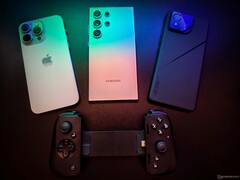


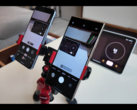
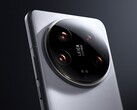
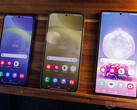

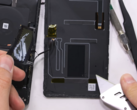


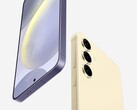

![The most affordable Samsung Galaxy S24 series phone gets an respectable score in DxOMark display test (Image source: DxOMark and Samsung [Edited])](fileadmin/_processed_/c/1/csm_Samsung-Galaxy-S23-DxOMark-Display-Score_801d026ddc.jpg)



